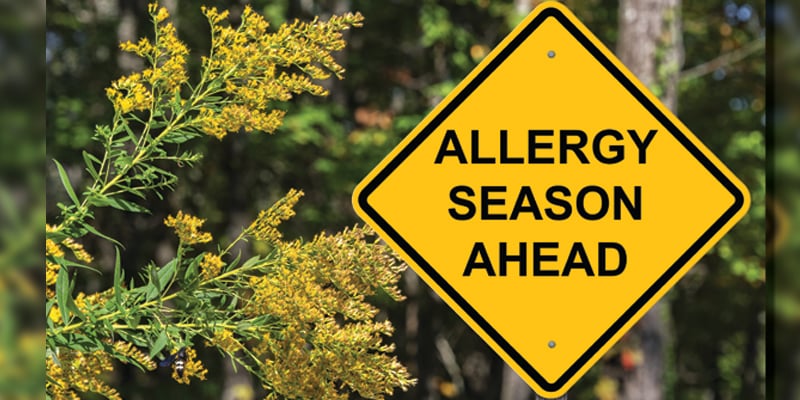The old saying is “April showers bring May flowers”. But those spring showers and flowers bring something else: allergies. Allergies can be inconvenient and have you grabbing tissues or eye drops to alleviate symptoms. CU Nursing’s Zeina Dehni, MBA, MSN, FNP-BC, who runs the nurse-led Community Health Clinic, shares her expertise on navigating allergy season.
What are seasonal allergies?
Seasonal allergies, also known as hay fever or allergic rhinitis, are caused by airborne allergens. Certain airborne allergens are more prevalent during certain times of the year:
- Spring: pollen from oak, maple, or cedar trees
- Late spring/early summer: grass pollen
- Late summer: wheat pollen
- Spring & fall: mold spores (usually in damp areas)
Common symptoms include sneezing, runny nose, stuffy nose, itchy eyes, nose, or throat, and fatigue.
When to see your primary care provider
Dehni says people should see their primary care provider if their over-the-counter allergy medication isn’t working, if their symptoms are interfering with their daily life, or if they worsen.
“It really comes down to personal preference,” Dehni explains. “If over-the-counter medications aren’t providing enough relief, you might benefit from a prescription option or even consider allergy shots.
Find out what you’re allergic to
A primary care provider can refer you to an allergist to see what you’re allergic to. There are also at-home allergy tests (through Wyndly, Quello, or Aspire) that you can do from the comfort of your own home.
“These types of tests are done via online consultations where they send you a kit, and you put a drop of blood on it, and it can identify what your possible allergies are,” Dehni says.
Allergies could be a sign of a more serious respiratory condition
“People should be concerned if they have symptoms like shortness of breath, chest tightness, a fever, or body aches, which usually aren’t present in an allergy,” Dehni says.
“If you have symptoms that last a whole year, it could mean you have an allergen inside your home. You might also develop asthma, so don’t assume your allergy symptoms are strictly due to allergies.”
Yes, your childhood allergies can lessen as you get older. You can also develop allergies as you age.
Dehni says children who have allergies can sometimes outgrow them as they get older. It’s because as they grow up, their immune system changes and becomes stronger.
Adults can develop seasonal allergies if they move from a low-allergen state to a high-allergen state, like Colorado.
“An adult’s immune system isn’t as strong as they age,” Dehni says. “Our bodies can become more hypersensitive, or we can develop diabetes or gain weight, and all of those things affect our immune system and how we respond to certain allergens.”
Check your weather apps for allergen information
Weather apps on your phone or tablet can give you pollen forecasts, letting you know when pollen is high, medium, or low.
“Check those pollen forecasts so that way you know if it’s going to be a high pollen day, and if you have allergies, you might want to stay indoors or take allergy medications in the morning,” Dehni says.
Easy ways to prevent allergies
Along with taking medication, there are easy steps to minimize the amount of pollen around you. Dehni suggests that if you’re spending time outside, especially hiking or biking, change your clothes and shower once you get home to remove excess pollen that may have attached to your clothing.
If you have a dog, brushing them before they come indoors can help reduce the amount of pollen they bring in. Using an air purifier is another effective way to keep indoor allergens under control.
“HEPA filters can be especially helpful in keeping the air clean, particularly in your bedroom," she says. "It's also a good idea to keep your windows closed while you sleep to prevent allergens from coming inside."
Allergy Services at Community Health Clinic
Community Health Clinic is CU Nursing’s nurse-led clinic located in the Health Sciences Building on the Anschutz Medical Campus. It’s open to students, faculty, staff (and their families) as well as patients in the surrounding community. |




